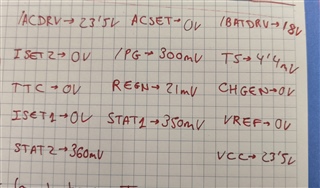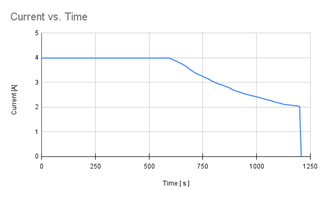Tool/software:
Hello E2E Experts,
Good day.
I was conducting tests for charging batteries, and at first, only the ACDRV, CE, and PG LEDs were lit (without the batteries connected). However, when we connected the batteries, all the LEDs turned off, and no current flowed. Despite this, the battery's output voltage remained correctly regulated at 21V, as expected from the board.
While we were continuing our tests, the output voltage suddenly stopped being regulated—it matched the input voltage from the power supply—and all the LEDs turned off. Since then, they have not turned back on. At the moment the issue occurred, the power supply was set to 24V, with the current limit configured to a maximum of 4A as a precaution.
Currently, the jumper settings are as follows:
- JP1: LOW
- JP2: ON
- JP3: VREF
- JP4: ON
- JP5: ON
Regarding the pin readings, when connecting the power supply at 24V, the measured values for each pin are attached in the provided image.

Regards,
TICSC






